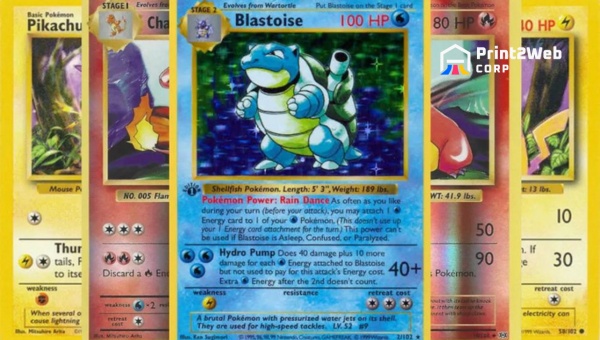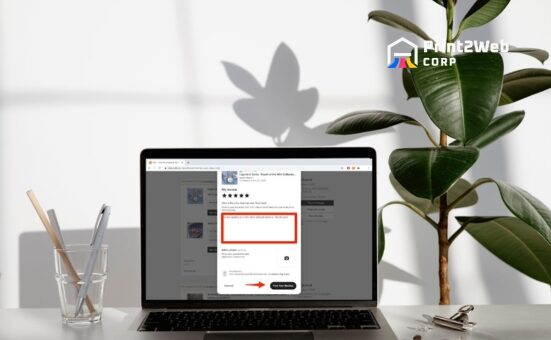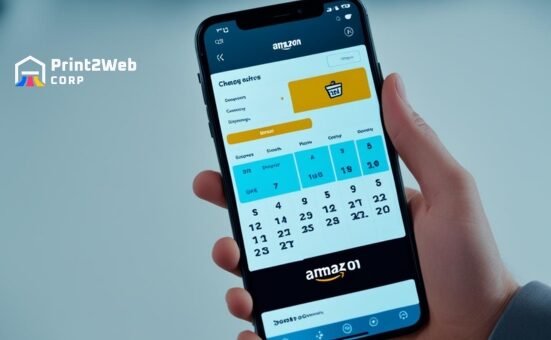Ever found yourself questioning, “How Much Are Pokemon Cards Worth?” If so, you’ve landed in the right place. Being an avid Pokemon cards enthusiast myself, I totally understand your curiosity. This bewildering question has often kept me up at night too! But keep calm and hold on to your excitement because we’re about to dive into this roller-coaster journey of Pokemon card valuation.
I know the anticipation must be growing by leaps and bounds but bear with me a second longer. So the answer you’ve been waiting for is – there’s no standard price for all Pokemon cards. Yes, you heard that right! The cost varies greatly from one card to another based on its rarity, condition, age, and demand. Some can be worth just a few cents while the rarest might be valued at thousands of dollars!
What You’ll Discover Here:
- Basic knowledge about what makes certain Pokemon cards valuable
- Crucial factors influencing their worth
- Insights into rarest and most expensive cards ever
- Practical tips on how to sell your own collection profitably
How Much Are Pokemon Cards Worth?
Pokemon cards have different worths based on their rarity, condition, and demand. Some cards could be valuable enough to put a huge smile on your face, while others may not bring in as much. The price of the card can range from a few cents to several thousand dollars. However, it’s important to remember that just because a card is old does not necessarily mean it’s worth a fortune.

Above all else, what dictates the value of a Pokemon card is its market value. If there’s high demand for a particular card and it’s scarce, that can significantly boost its price. On the other hand, if there are hundreds of the same card available and no one particularly wants it, then that card will likely have low market value.
Understanding Market Value
Market value refers to how much your Pokemon card is worth in the current market scenario. It refers to what someone would pay for that specific Pokemon Card at this moment in time. Prices may change virtually every day due to varying supply and demand levels in the Pokemon Trading Card Game (TCG) market.
For instance, if Charizard is continuously winning Tournaments or Championships worldwide or is suddenly highly featured in a new video game or movie; its popularity goes up thus increasing its demand amongst collectors/traders; driving up its market value at any given point of time.
Recognizing High-Value Cards
The key aspect when considering which cards are valuable lies chiefly – but not exclusively – with First Edition Holofoils and Shadows variants along with others highlighting popular characters from widely liked collections/sets such as Base Set Shadowless or 1st edition Fossil amongst many others.
It’s also crucial to know about any potential errors/misprints present on selected older set releases since these might as well prove to be unique thereby attracting higher prices than their non-errored counterparts.
Remember also that other aspects like how well certain cards have been preserved, graded, and/or authenticated notably affect their overall market value. In mint or near-mint condition, with a high grading from professional grading services like PSA or Beckett – these are the types of cards to watch out for when searching through collections as they fetch top dollar among hobbyists and investors alike.
Most Expensive Pokémon Cards Ever Sold
Pokémon cards have become valuable collectibles, with some rare editions fetching astronomical prices in auctions and private sales. While most common Pokémon cards are worth only a few dollars, the most sought-after ones can command prices comparable to luxury cars or even houses.

Below is a list of some of the most expensive Pokémon cards that have been sold:
- Pikachu Illustrator Card: This card, given to winners of a CoroCoro Comic illustration contest in Japan, holds the record for the highest price paid for a Pokémon card at public auction. One of these coveted cards sold for over $5 million in 2021.
- First Edition Shadowless Holographic Charizard Card: Known as one of the Holy Grails for collectors, pristine copies (rated PSA 10 Gem Mint condition) of this card have fetched up to $369,000 at auctions.
- 1999 Super Secret Battle “No. 1 Trainer” Promo Holographic Card: A super-rare card awarded to finalists at the Secret Super Battle tournament held in Tokyo in 1999; it’s so scarce that it’s hard to put an exact figure on it, but individual cards have reportedly been insured for $2 million.
- Kangaskhan Family Event Trophy Card: This exclusive non-holo card was presented only to participants in a parent/child mega battle tournament held in Japan back in 1998 It’s extremely rare and one was sold at an auction for around $150,000.
What Makes Pokemon Cards Valuable?
The value of a Pokemon card comes from how rare it is and what condition it’s in. Cards that are hard to find or have been kept in great shape often have higher prices.

Also, if a Pokemon card is linked to an important event or a special time in pop culture, people might want it more and pay extra for it.
- Rarity: Card editions like first edition prints, limited releases, promotional cards, or those from original sets often fetch higher prices due to their scarcity.
- Condition: The better the condition of the card (graded on a scale from ‘Poor’ to ‘Gem Mint’), the more valuable it is likely to be. Cards without scratches bends, or whitening on edges are more in demand among collectors.
- Popularity: Some Pokémon characters are universally beloved by fans and thus their cards hold greater value. For instance, Charizard has been a fan favourite since inception leading its cards to be worth considerable sums.
- Competitive Utility: Cards that perform well in gameplay can gain value as competitors seek them out for their decks.
- Special Features: Elements such as holographic finishes, unique artwork by renowned illustrators, errors on cards or misprints can also enhance their rarity and desirability.
Understanding these criteria is essential for anyone involved in purchasing or selling Pokémon trading card game products.
Also Read: Amazon Package Not Delivered? Quick Fix Solutions Here!
Grading Standard Terminology of Pokemon Cards
Grading Pokemon cards is a key part of the trading card industry as it helps to assess the condition and value of individual cards. Collectors, sellers, and buyers rely on this standardized system to make informed decisions.

Here are some essential grading terms used when evaluating Pokemon cards:
- Gem Mint (GM): Indicates a nearly perfect card with virtually no flaws visible to the naked eye or under 10x magnification. Usually graded as 10 by professional grading services.
- Mint (M): A card that may have a hardly noticeable and very minor flaw such as a slight off-centering or minor printing imperfections but still has four sharp corners, full original gloss with no stains. Generally graded around the range of 9 by professional services.
- Near Mint (NM) or Excellent (EX): A card in this category might exhibit slight wear such as a minor surface scratch or edge nick, slight whitening on edges or corners but still maintains good eye appeal. Common grades under this category would be from 7-8.
- Very Good (VG) to Fine: Cards showing moderate wear like surface wear, rounding at the corners, and light creasing may fall into this bracket. These are typically not top-tier collectibles unless they are very rare and might be rated around grades 5-6.
- Good to Fair: Noticeable handling wear is present such as moderate creases or bends, rounded and fuzzy corners, evident scratches/scuffs, etc. This grade normally falls below the 5 rating scale.
Understanding these terms and their definitions can aid collectors in accurately determining the quality of their Pokemon cards before making purchases or preparing for sale.
Also Read: Film Subtitles Unlocked: Skyrocket Your Language Skills!
Determining Pokemon Card’s Rarity
Rarity is an essential aspect to consider for collectors and players of the Pokémon Trading Card Game. Rare cards are often more sought-after, can be more powerful or unique in gameplay, and have a higher collectible and monetary value.

Identifying the rarity of a Pokémon card is straightforward if you know what to look for.
- Check the Bottom Right Corner: Look at the bottom right corner of your Pokémon card. Here you will find a symbol that indicates rarity. Common cards have a black circle, uncommon cards have a black diamond and rare cards display a black star.
- Look for Holofoil: Cards with a holographic picture are usually rarer than non-holographic versions. If the artwork shimmers or shines when light hits it, that’s an indication of holofoil rarity.
- Ultra-Rare Cards: These often feature special art or designs that cover more than just the picture box—extending across the entire card—and may include Full Art or EX/GX marks. These also have unique symbols such as white stars or other distinctive icons indicative of their ultra-rare status.
- Secret Rares: Secret rare cards go beyond the standard numbering system found in their respective sets (e.g., 115/114). They’re usually much harder to find and can be identified by their numbers exceeding the total count listed for that set.
By understanding these indicators, you can quickly determine how rare any given Pokémon card might be within your collection or when acquiring new ones.
Also Read: Unlock Profit Potential: Vending Machine Business Strategies
Frequently Asked Questions
*Do you need insurance for your drone business?
It protects against potential damage or liability issues that can arise from using drones. it would help if you had insurance for your drone business
When don’t you need drone coverage?
You might not need drone coverage if you’re flying your drone purely for fun and it’s under a certain size. However, it’s best to check local regulations as these vary.
What is personal drone insurance?
Personal drone insurance covers damage and liability when flying drones for non-commercial, recreational purposes.
What is commercial drone insurance?
Commercial drone insurance protects businesses that operate drones, covering liabilities and risks associated with commercial operations.
Conclusion
The value of Pokemon cards can vary widely. From a few cents to thousands of dollars, every card carries its unique worth. What decides their value boils down to rarity, condition, historical significance, and market demand.
Remember that to find out what your Pokemon cards are worth requires careful assessment and sometimes even professional opinion. Whether you’re looking to build your collection or sell those high-value cards for the best price, being well-informed is key. Always take the time to protect your cards and consult reliable sources when appraising them.







